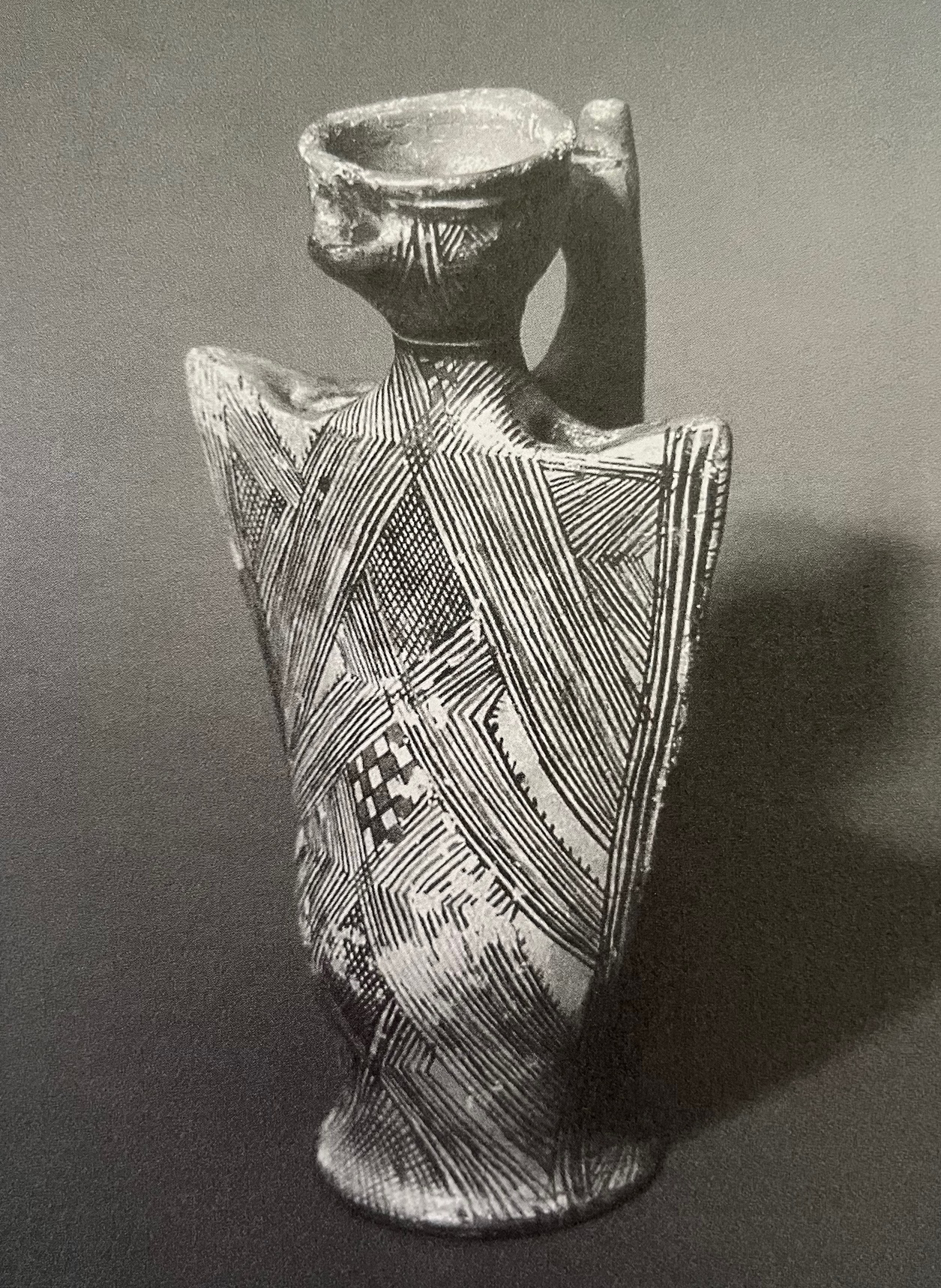Kabyle women and visualizing birth through cultural objects: lamp representing a pregnant woman

Kabyle oil lamp representing a pregnant woman
Makilam collection, photo by Makilam, copyright 2007
Makilam, a highly prolific writer, scholar and Kabyle woman, has examined symbols, objects and magic in the context of Berber culture. The Berbers are people indigenous to communities found in North Africa. Central to her work has been the study of Kabyle women and examinations of motifs and symbolism related to a secret female language. As she explains in her 2007 book, Symbols and Magic in the Arts of Kabyle Women:
These secrets can only be understood and transmitted by women, for, as it will be explained, they have a direct relation to their femininity and to the metamorphosis of their bodies during childbirth (6).
In the course of her work, Makilam explains that the Kabyle women reveal themselves as potters who create children. She examines hatchings and symbols on pottery, often of a downward triangular form, which represent birth-giving. She also looks at objects such as the oil lamp, represented in the above photograph. Of the lamps, Makilam states:
These lamps are shaped in the image of a woman, since they often present, in their lower part, the belly of a pregnant woman. I believe it is important to specify that a number of these oil lamps which are classified as marriage lamps are not necessarily so. They were often made to express a wish: their symbols and forms had a magic impact on the woman who wished for a child or who was bearing one and wanted to surround it with good energies (53).
In the context of Kabyle culture, we see that oil lamps and other objects have brought a sense of community and empowerment to women and pregnant women. The rounded form of the belly on the oil lamp gives a sense of fullness and fecundity to the viewer.
To learn more about Makilam and her work, as well as about Kabyle culture, see Makilam’s website at: http://www.makilam.com/